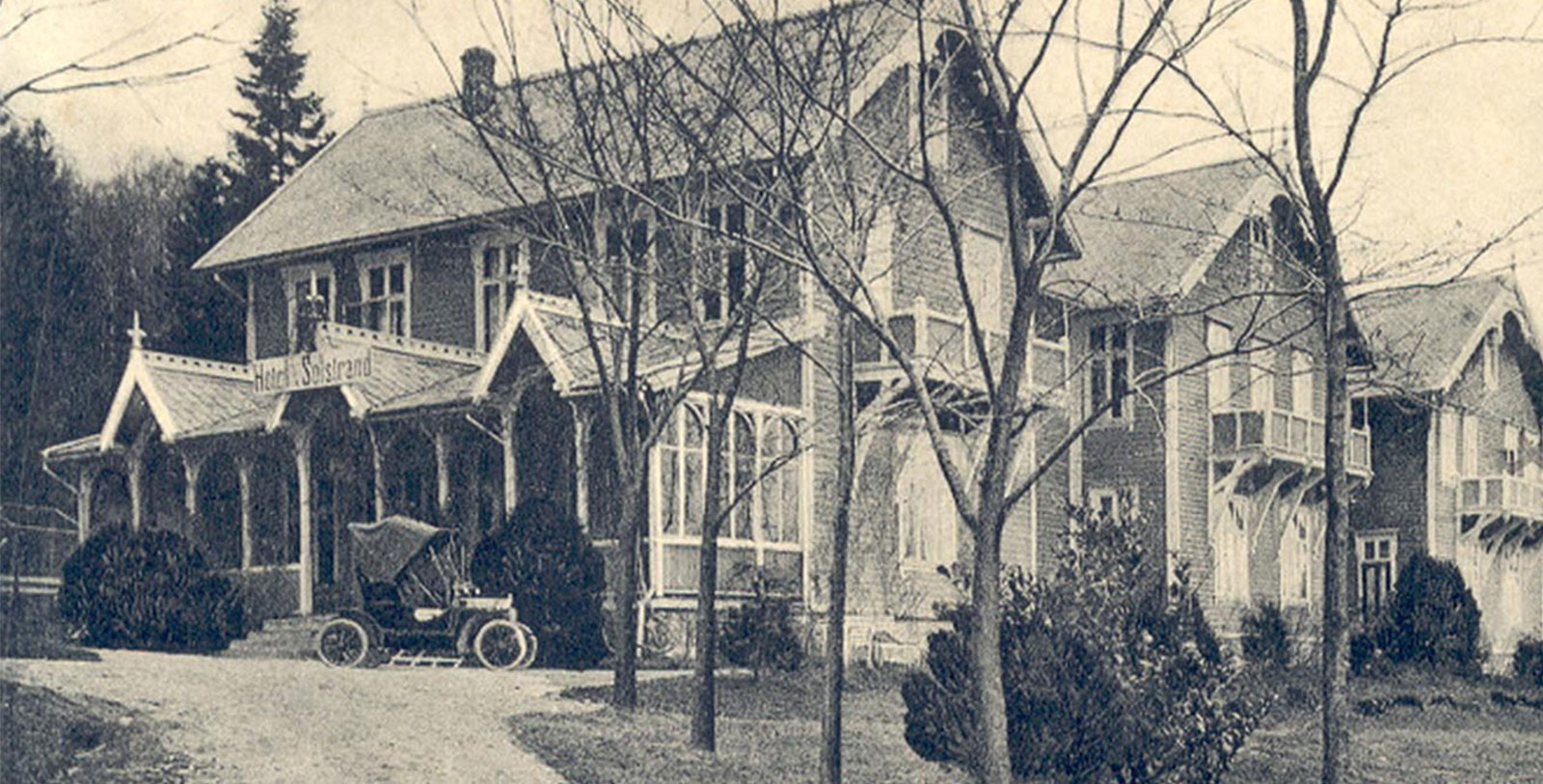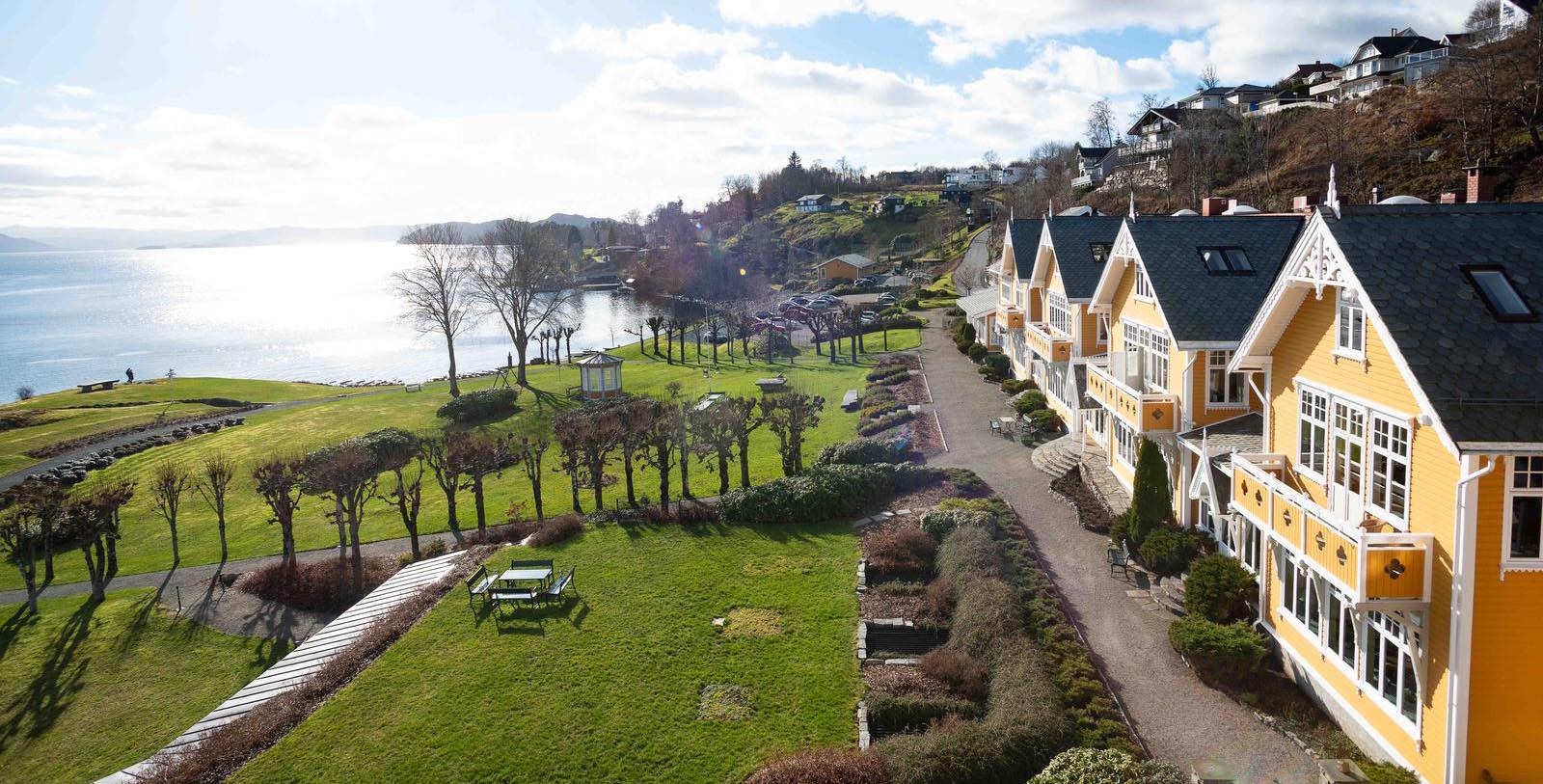Receive for Free - Discover & Explore eNewsletter monthly with advance notice of special offers, packages, and insider savings from 10% - 30% off Best Available Rates at selected hotels.
history
Discover the Solstrand Hotel & Bad, which was created by Christian Michelsen, who would later become Norwya’s first Prime Minister.
Solstrand Hotel & Bad, a member of Historic Hotels Worldwide since 2012, dates back to 1893.
VIEW TIMELINEToward the end of the 19th century, the city of Bergen was rapidly emerging as one of the most important seaports in Europe. Home to a major harbor since the the Middle Ages, Bergen had recently seen a dramatic uptick in its exporting activities due to the greater industrialization that had occurred throughout the continent. Major construction projects subsequently commenced throughout the city as a means of catering to the large number of people that had started to visit Bergen regularly. Among the many locals to participate in this construction boom was a prominent local ship captain named Christian Michelsen. Michelsen specifically saw the many new businesspeople arriving in Bergen as potential clientele for a brilliant boutique hotel. Selecting a plot of land in the neighboring village of Os, he began building a gorgeous retreat that could provide a haven for the city’s visiting sailors. Work on the hotel began in the mid-1890s and lasted for several months. Michelsen invested heavily into the project, too, sparing no expense in its creation. In fact, his tireless support for the project resulted in his architects developing a magnificent structure that resembled a Swiss-inspired chalet.
When the construction finally concluded in 1896, the spectacular “Solstrand Hotel & Bad” debuted as one of the most luxurious holiday destinations in all of Norway. True to Michelsen’s wishes, the hotel quickly became a favorite among foreign mariners, with many visiting to collaboratively brainstorm economic ideas with him. Nevertheless, Michelsen gradually found it difficult to manage the hotel, especially once he was elected as Norway’s first Prime Minister in 1905. Finding it difficult to manage the hotel with his newfound political responsibilities, he specifically presided over its sale some three years later. The Solstrand Hotel & Bad then had several owners until the Schau-Larsen family bought it in 1929. Four generations of the family have since run this wonderful historic hotel, in which they have operated the business as if it was their own residence. They have also presided over recent renovations, too, which have expanded Solstrand Hotel & Bad’s offerings without compromising its historical character. A member of Historic Hotels of America since 2012, the hotel remains as a choice destination for exploring Norway's beautiful environment.
-
About the Location +
The Solstrand Hotel & Bad is located in the village of Os, which is just a short distance away from the prominent city of Bergen.A dominant presence in the region, Bergen’s history dates back nearly a thousand years. In 1066, a massive Viking fleet of nearly 300 ships anchored off the coast of northern England. Leading the host was the legendary Norwegian king Harald Hardrada, who had been inspired to seize the English throne following the death of King Edward the Confessor. Nevertheless, Hardrada’s ambitious plan fell apart when the English thoroughly routed his army at the Battle of Stamford Bridge. The king himself was even slain at some point during the fight. Disheartened, the surviving Norwegians sailed home under the banner of Hardrada’s son, Olaf Kyrre. Now ruling Norway as King Olaf III, Kyrre solemnly guided the kingdom through some of the most prosperous years in its history. Among the major projects that he undertook was the development of Bergen in western Norway. (The city’s original name was actually “Bjørgvin.”) Located only a few miles from the coast of the North Sea, Bergen rapidly emerged as one of the most significant cultural centers in Norway. Indeed, Kyrre constructed many important municipal buildings in the city, such as a sprawling estate that eventually evolved into the imposing Bergenhus fortress.
King Olaf’s city only continued to grow in significance, as it obtained the status of royal capital by the height of the Middle Ages. In fact, numerous royal coronations took place in Bergen, with the first one transpiring during the mid-12th century. Although Bergen’s political status was diminished greatly after King Haakon V relocated the capital to Oslo, the city nonetheless remained an important economic center for generations. The city’s proximity to the North Sea made it an active seaport centuries thereafter, especially among the merchants of the Hanseatic League. A powerful commerce guild rooted in several northern German communities, the organization traded widely throughout all of Europe until the onset of the Renaissance in the 16th century. Like many other seaports on the continent, Bergen became heavily affected by the economic activity of the Hanseatic League. Some German businessmen affiliated with the group evenutally settled in Bergen permanently and developed a trading post near the city’s wharves. Called the “Bryggen,” this facility quickly grew into one of the league’s four main outposts known as a “kontor.” Driving this wealth was the export of dried cod, which the German merchants had a monopoly over for some time.
Bergen endured as a bustling seaport even after the Hanseatic League’s reach across the continent declined in the 17th century. In fact, its strong economy even made it the target of pirates, such as the notorious Victual Brothers. But foreign nations attacked Bergen as well, including the English, who assault the port during the Second Anglo-Dutch War. (The English were trying to corner a Dutch merchant fleet that had anchored in Bergen.) Nevertheless, Bergen remained an incredibly prosperous port despite those periodic tumultuous moments—a status that it continued to enjoy today. Its impressive history has also made Bergen a favorite destination for countless cultural heritage travelers. Among the many fascinating institutions and attractions that have allured tourists from around the globe include the Norges Fiskerimuseum, the Bergens Sjøfartsmuseum, and the Hanseatic Museum and Schøtstuene. It is home to many outstanding historical landmarks, too, such as the once mighty Bergenhus fortress. One of its historical landmarks, the Bryygen, is even recognized as a UNESCO World Heritage Site by the United Nations. Come stay at the Solastrand Hotel & Bad and experience the heritage of this fantastic city firsthand!
-
About the Architecture +
The Solstrand Hotel & Bad showcases elements of what is now referred to as “Swiss chalet” architecture. Swiss chalets were once rustic cottages that first emerged as seasonal farmhouses around the height of the Middle Ages. Indeed, the Swiss chalet was a refuge for cattle herders, who would bring their livestock up the mountain ranges during the warmer months. The house itself functioned as a secondary home, within which the farmers would create a variety of dairy products for trade. But the chalets lost their original purpose as time passed, gradually turning into quaint holiday homes instead. The main reason behind the transformation was the emergence of the Swiss Alps as a popular tourist destination in the 19th century, specifically among the British and the French. They eventually discovered the many chalets scattered around the country and began buying them up in great numbers. The foreigners subsequently renovated the chalets to reflect their romanticized views of alpine life in Switzerland. Soon enough, the new iteration of the chalet had swept across the region. Many natives went as far as to alter their own homes to resemble the aesthetic, essentially making the architecture “Swiss” in the process. Many largescale commercial buildings in Switzerland eventually featured the style, too, including restaurants, storefronts, and hotels. A few Swiss construction companies even created premade vacation chalets for people to build in other nations throughout Europe, especially in Scandinavian countries like Norway. The chalets—and their spinoffs—were typically very beautiful, despite the rusticity of their layout. Set upon a rectangular foundation, the buildings were most easily recognized for their widely gabled roofs and facades of carved details and wooden balconies. Other iconic features included exposed construction beams, large windows, and weatherboarding.


























